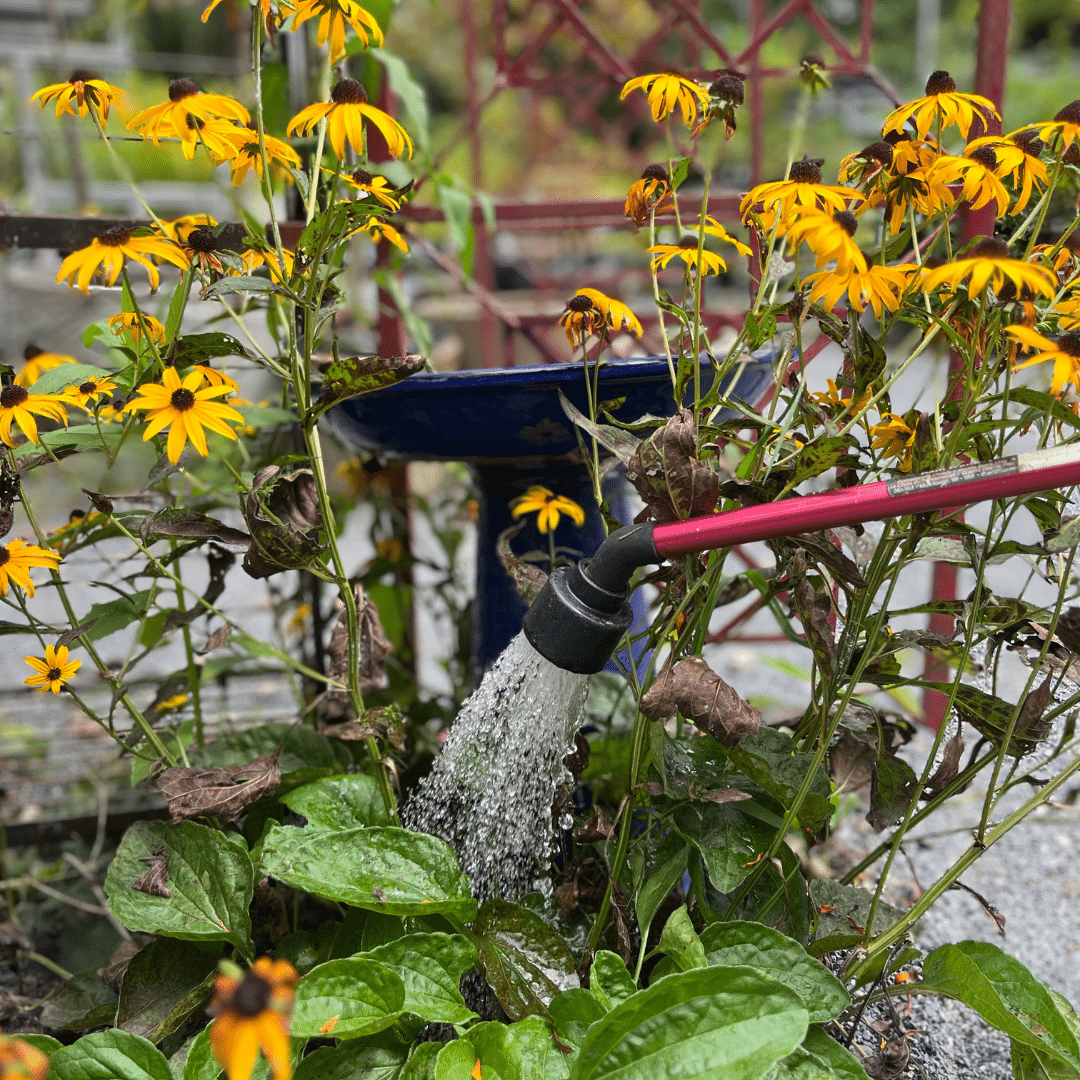Watering Care For Garden Beds Planted In The Summer
It is a myth that native plants don’t require any watering! Each plant is unique and has varying water requirements. Gardens that are planted in the summer months will require increased watering needs to become established. I recommend checking the plants daily for wilting for one month. The first two weeks may require daily watering if temperatures are above 90 degrees and there is no rain and your beds are in full sun. Usually the plants start to require less need for water after the two week mark but will still require daily checking. If you water by hand with a hose and watering wand and apply water to each plant it gives you a chance to check each plant to see how it is doing, if it tends to wilt (called flagging) meaning it requires more water than it’s been getting, if there is evidence of animal eating, if there is pest damage or disease. After two weeks of regular watering you can usually back down to 3 times a week with spot watering daily for plants that need it (like hydrangea, summer sweet and swamp milkweed). If a plant gets missed and becomes too dry and passes it’s permanent wilting point its’ leaves will turn brown and drop. It’s not too late. If you continue to water it, it will send out more leaves. This process will take a few weeks. Don’t give up! Below are a few more watering tips. Planting can be very successful in the summer- it just requires extra attention!
Watering Tips:
- Watering is best when it is done in the morning or early evening. This allows for the plants to absorb the water throughout the day, and prevents the water from evaporating quickly on hot afternoons in the summer. Morning is preferable so that the foliage dries before night time. Sometimes a combo of wet plants and cold evening temps can cause a ripe environment for pathogens. That is why applying water at the base of the plant, instead of overhead watering with a sprinkler, is ideal.
- Let the rain water for you as much as possible.
- Water consistently. Soil should be evenly moist. Plants need to be watered if the top inch or two is dry, unless rain is predicted.
Water deeply. The top five inches of soil should be moist. Otherwise you will cause shallow root growth, which will cause the plant to wilt easily. - Water purposefully. Direct the stream to the base of the plant and avoid wetting the foliage. Use a hose, drip or trickle irrigation, NOT a lawn sprinkler!
Water frequently (during droughts). Sand and heavy clay soils lose moisture more quickly. - Mulch. Add about two inches of mulch to prevent water loss. Place it carefully around the plant and do not let it touch the trunk or crown.
Don’t give up! Withered and wilted plants can recover once watered. Deciduous plants should be stripped of dead leaves to assist and speed recovery.

